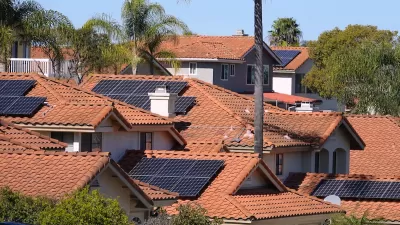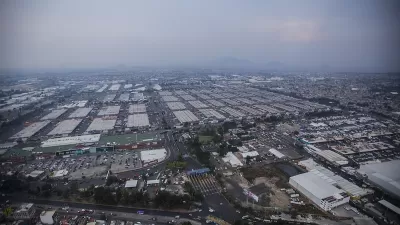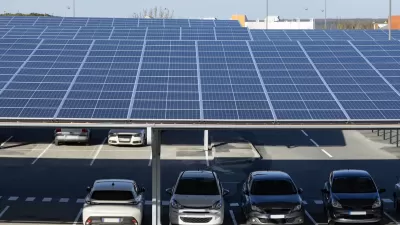Solar energy still makes up just 5 percent of the nation’s energy mix, but could grow faster in coming years.

The United States added 32.4 gigawatts of solar capacity to its grid this year, amounting to 52 percent of all added capacity and far outpacing the next-highest source, natural gas, at 18 percent.
According to an article by Darren Orf in Popular Mechanics, “This solar boom can be attributed to a few things—chief among them the Inflation Reduction Act (IRA), which set aside roughly $369 billion for investment in and production of clean energy tech, as well as major incentives for installing rooftop solar.” California and Texas led the way in installations.
Solar now makes up 5 percent of the country’s energy mix, but authors of a report from the Solar Energy Industries Association say “with the industry firmly established, solar capacity could grow to 500 gigawatts by 2034 (though, they also note that those outcomes could shift due to policy changes).” In California, a new net metering policy could disincentivize homeowners from installing panels.
FULL STORY: It’s Official: America Is Experiencing a Solar Power Explosion Unmatched in History

Maui's Vacation Rental Debate Turns Ugly
Verbal attacks, misinformation campaigns and fistfights plague a high-stakes debate to convert thousands of vacation rentals into long-term housing.

Planetizen Federal Action Tracker
A weekly monitor of how Trump’s orders and actions are impacting planners and planning in America.

San Francisco Suspends Traffic Calming Amidst Record Deaths
Citing “a challenging fiscal landscape,” the city will cease the program on the heels of 42 traffic deaths, including 24 pedestrians.

Defunct Pittsburgh Power Plant to Become Residential Tower
A decommissioned steam heat plant will be redeveloped into almost 100 affordable housing units.

Trump Prompts Restructuring of Transportation Research Board in “Unprecedented Overreach”
The TRB has eliminated more than half of its committees including those focused on climate, equity, and cities.

Amtrak Rolls Out New Orleans to Alabama “Mardi Gras” Train
The new service will operate morning and evening departures between Mobile and New Orleans.
Urban Design for Planners 1: Software Tools
This six-course series explores essential urban design concepts using open source software and equips planners with the tools they need to participate fully in the urban design process.
Planning for Universal Design
Learn the tools for implementing Universal Design in planning regulations.
Heyer Gruel & Associates PA
JM Goldson LLC
Custer County Colorado
City of Camden Redevelopment Agency
City of Astoria
Transportation Research & Education Center (TREC) at Portland State University
Jefferson Parish Government
Camden Redevelopment Agency
City of Claremont





























